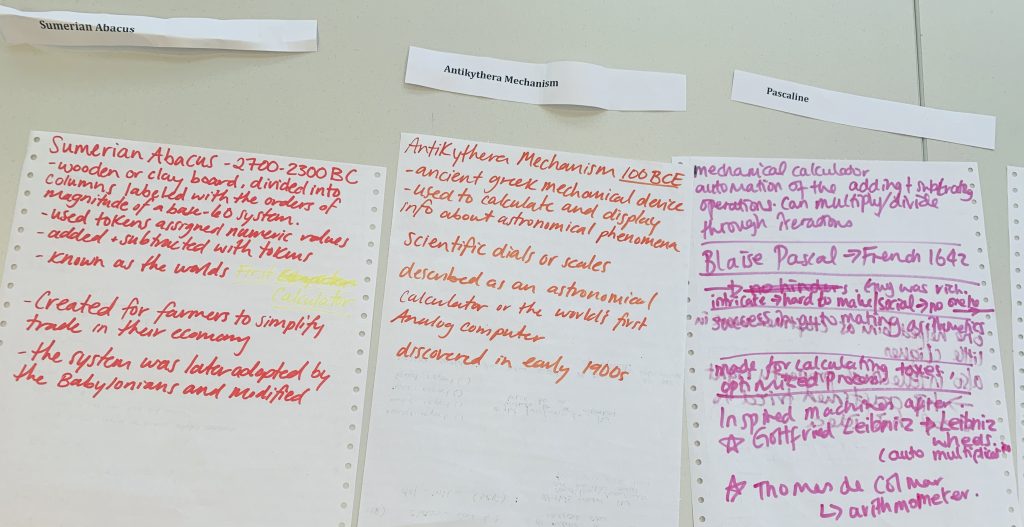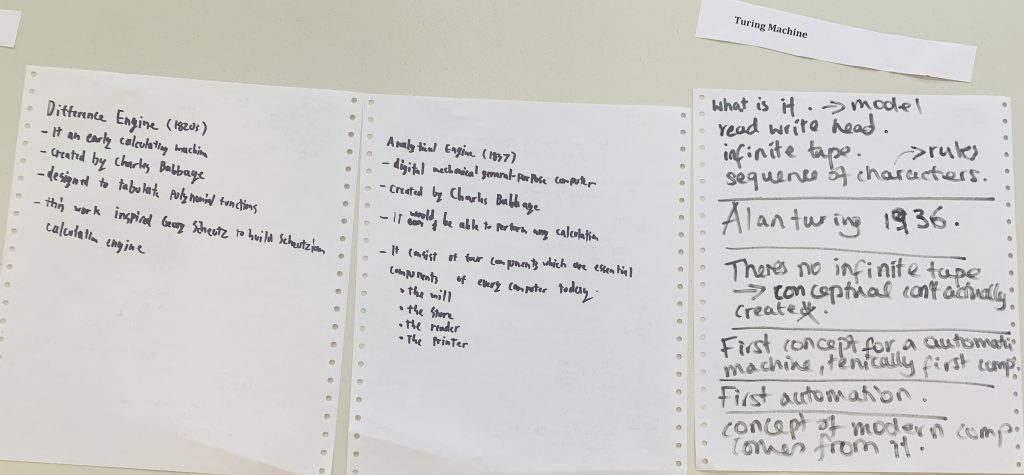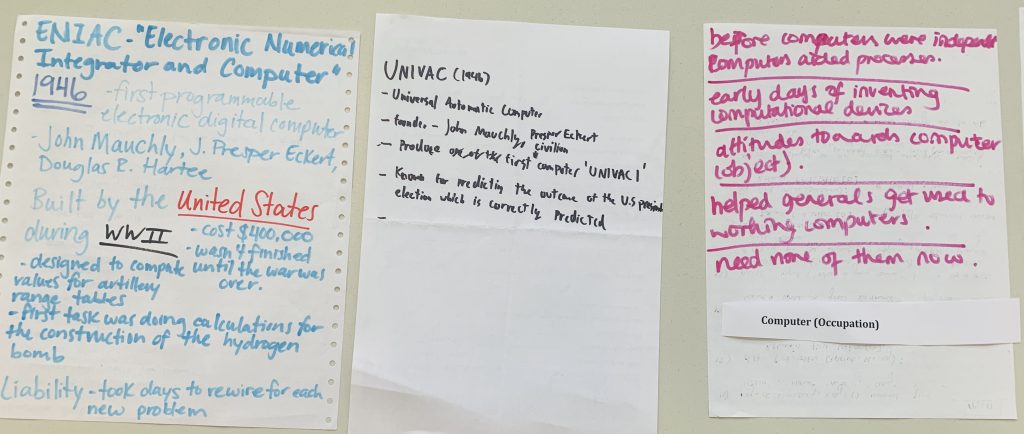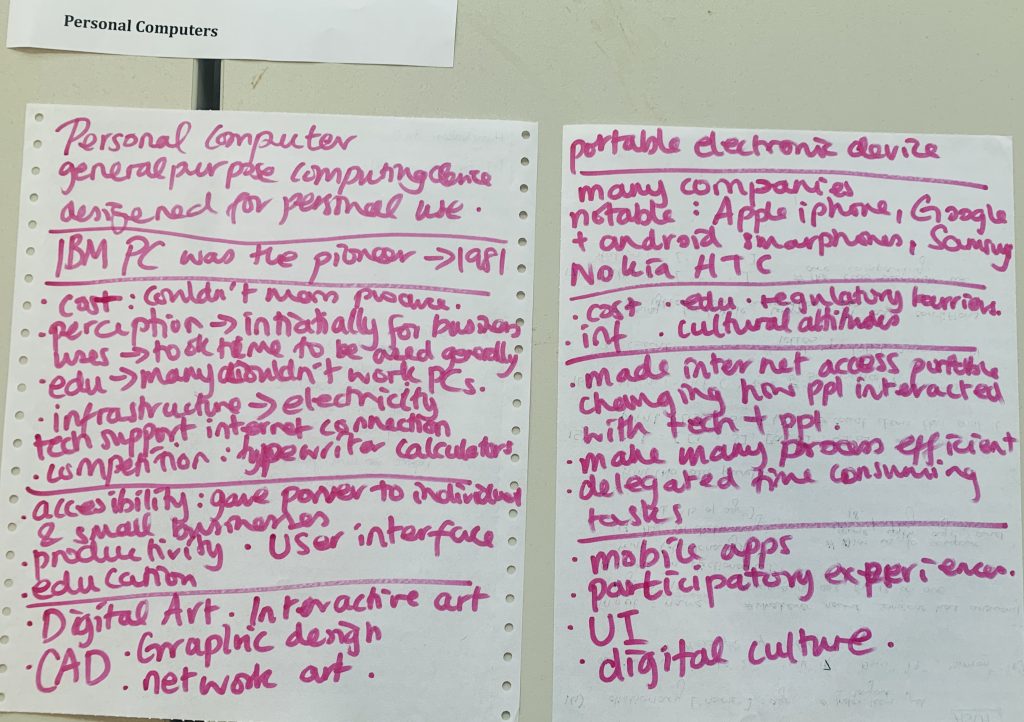TASK
This week we completed research individually to compile a timeline of profiles for a range of historical computers, answering the below questions:
- What is it?
- Who created it?
- What social, economic or environmental factors helped (or hindered) its creation?
- How did it revolutionize the field of computing?
- Did it lead to any shifts in human-computer interaction? How?
- How have artists or designers used or responded to it?
The range of computers we researched:
- Sumerian abacus
- Antikythera Mechanism
- Pascaline
- Difference Engine
- Analytical Engine
- Turing Machine
- ENIAC – electronic numerical integrator and computer
- UNIVAC – universal automatic computer
- Computer(occupation)
- Personal Computer – PC
- Portable electronic device
We documented our findings on paper and came together to discuss our thoughts and opinions on our timeline after we were done. The aim was to give an overview and an idea about the evolution of computers from their beginnings and why they developed in the direction of our modern-day computer. The only tool we used was the internet not strictly limited to reputable sources so information was not verified
OUTCOME: below are images of our timeline:




EVALUATION:
I was content that we achieved our objective in a short amount of time. Our lecturer has assured us that we have pretty much covered all the basic information regarding all these computers. She also chipped in with missing essential information we missed when we were going through our findings to make sure we knew everything we needed to know.
LECTURE THIS WEEK:
We had a brief-but-more-detailed-class-task overview of the timeline of computers with a special focus on generative arts, along with the significant inventors, pioneers and notable machines in its history. I have noted in my personal notebook.
